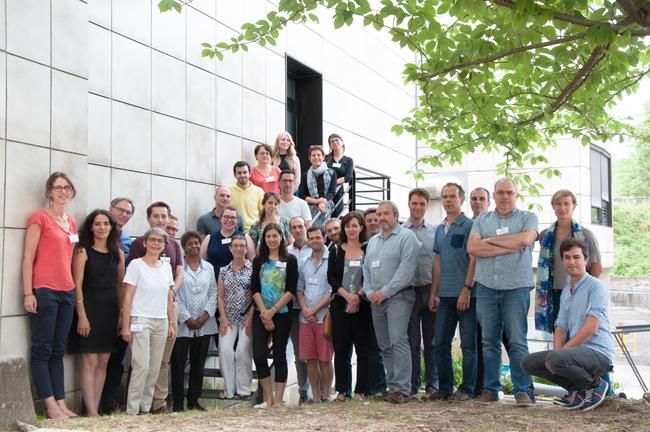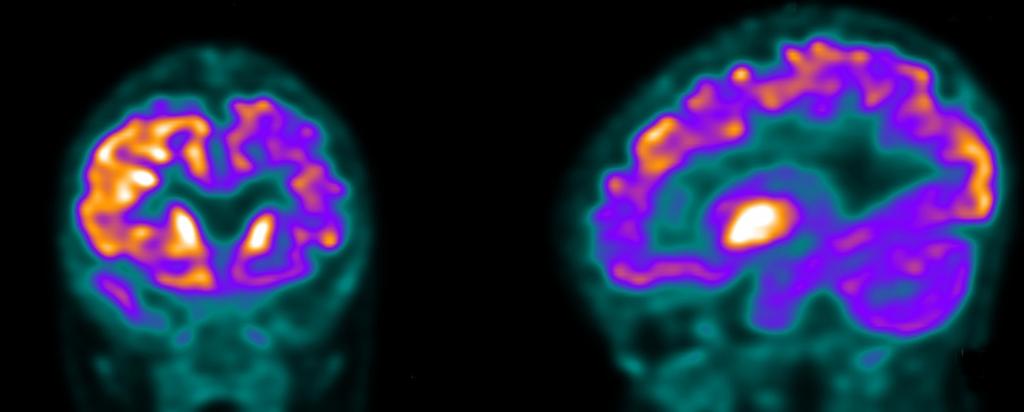

Published on the 21st September 2018 by ANSTO Staff
Earlier this year ANSTO, the French National Institute of Medical Health and Medical Research (INSERM) and the French Alternative Energies and Atomic Energy Commission (CEA) combined efforts to organise a workshop on the ‘integration of multiscale biomarkers to increase the impact and utility of PET (MBI-PET)’.
The aim of the series is to bring together different communities and build action plans to tackle challenges related to the modelling of PET datasets that target complex bio-marker systems.
The first workshop which focussed on PET for neuro-degenerative disorders was held at SHFJ, Orsay, France from the 16th-18th of July 2018.
Forty five international experts from different fields, including Prof Marie-Claude Gregoire, Leader of health research at ANSTO, the gathered with the aim of exploring complex neuro-biomarkers in PET.
The objective of the workshop was to build an action plan to tackle the challenges related to the modelling and interpretation of tracers that target complex biomarkers.
The three day workshop focussed on two main targets which both have challenges in quantification and interpretation.
“To achieve that as a group, first we discussed the challenges associated with the targets themselves, as well as how integrating biological information from in vitro and ex vivo techniques with different imaging modalities could elucidate different aspects of the biological processes under study,” said Gregoire.
Participants explored the neuroinflammation target for the translocator protein, TSPO, which has been extensively used in preclinical and clinical research protocols of neurological and neurodegenerative diseases in the past 15 years. ANSTO developed a TSPO knockout mouse model in 2015 in association with the University of Sydney.
.Although more than 40 tracers have been developed and studied, the function and behaviour of TSPO in normal or disease states it is not yet fully understood.
“As well as that, there are discrepancies in the field about the most appropriate PET quantification methods,” said Gregoire.
The imaging community is confident that imaging of TSPO will not end anytime soon because the potential of this target as a biomarker of neuroinflammation in various neurodegenerative diseases, as well as the time and financial investment that have been committed to its study.
“For this reason, we need to understand this protein better, from a clinical and a fundamental point of view. “
The second topic related to tracers that target misfolded proteins that have been recently implicated in neurodegenerative diseases such as Alzheimer’s disease or Parkinson’s disease among others.
“In this case, there is still a lot to discover about the imaging of these tracers and the proteins themselves in order to provide higher level of fundamental biological understanding and more clinical information about these neurodegenerative diseases,” said Gregoire.
The program of the workshop allowed a significant amount time for discussion. By limiting participants to experts in the targets, PET radio-tracers for the targets, the imaging modalities or the biology and disease processes, there were detailed, in depth and fruitful discussions.
A number of challenges were identified that could be solved by using the broad expertise and knowledge of those present at the workshop in future collaborative projects.
“We are very proud to have helped organise this event with the assistance of Dr Catriona Wimberley, a PhD graduate from ANSTO and has just finished her four years post-doctoral fellowship with a SAAFE scholarship. Her leadership and strength in the field demonstrate the importance of research training associated with international collaboration opportunities,” said Gregoire.
The next steps will be the preparation of a collegial invited paper on the current status of TSPO imaging and to form working groups to tackle specific challenges identified within the workshop.
The second workshop is scheduled to take place in 2020 in connection with an international conference.